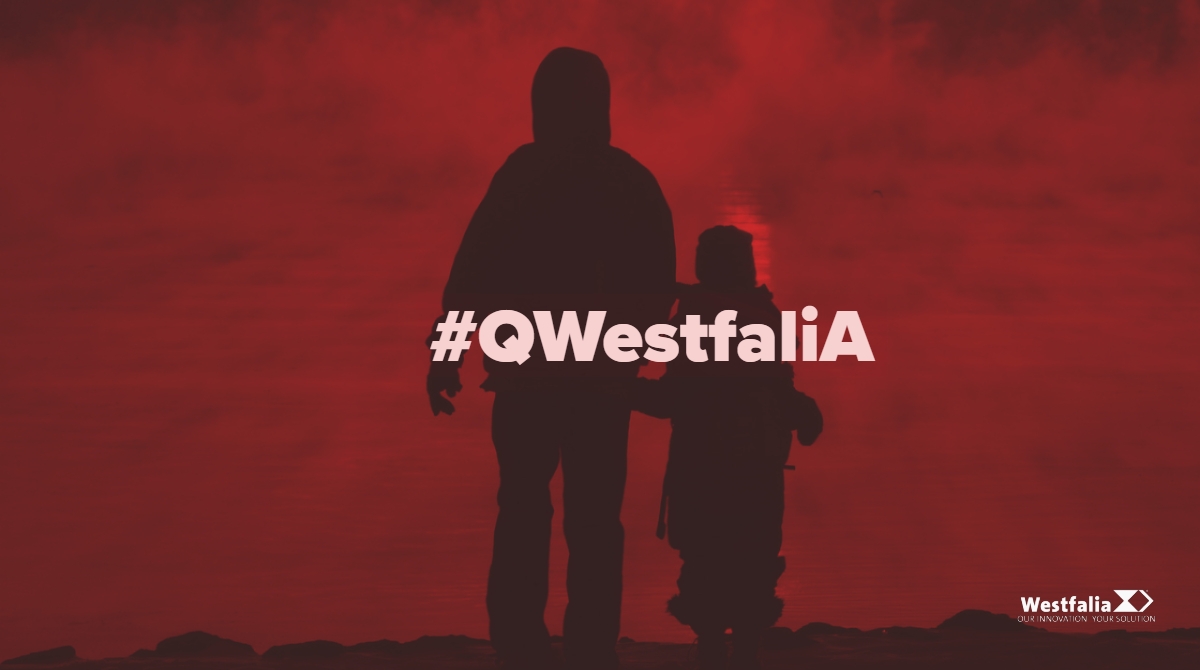June 17 2019

Back in April, Westfalia’s panel of experts had the pleasure of presenting a seminar at ProMat. Presented by Dan Labell (President), Dave Williams (VP of Technology Solutions), Ryan Smith (VP of Automation) and Jon Schultz (VP of Sales), the seminar, titled “QwestfaliA: Your Journey to Automation,” walked attendees through the journey of automating your warehouse and answered questions along the way.
Knowing that you might have the same questions, we thought it would be helpful to share some of the more frequently asked questions and our responses:
Q: What needs to be considered before implementing an AS/RS and a layer picking system?
A: It’s simple to decide whether an AS/RS is the right investment by taking the following three-fold approach. First, perform an analysis of the warehousing system’s existing design and framework. Then, examine some basic, yet key, criteria to determine if the operation is suited for automation technology. And, finally, justify the basic cost for such a system by demonstrating its overall benefits.
Q: How do you predict the ROI for an AS/RS project?
A: While there are several financial tools commonly used to justify capital expenditures, the payback method is the most common method of calculating ROI. This is the time required for the amount invested in an asset to be repaid, or balanced out, by the net cash flow generated by the system—investments with shorter payback periods are typically considered better investments. By calculating the ROI of an automated system using cash flow projections and capital budgeting forecasts, you will be able to see the abundant benefits to your warehouse production. In order to calculate your individual benefits of a high-density automated warehouse, use our benefits calculator on our website.
Q: How do you justify the investment?
A: Perform the justification of an automated system using discounted cash flow capital budgeting techniques. When using straight payback methods, the time value of money is rarely considered. To compound the problem, the benefit of having the automated system operate for its anticipated life of more than 25 years is ignored. Fortunately, determining the Net Present Value (NPV) and the Internal Rate of Return (IRR) is easy with today’s spreadsheet programs. These figures should indicate if there is an appreciable justification for the initial cost difference associated with installing an AS/RS versus building a conventional system. Compare both by establishing cash flow differentials, and then apply the cost differential to the cash flow benefits.
Q: What industries benefit from robotic automation?
A: The main industries our solutions serve are in the following industries:
- Food
- Beverage
- Chemical & Industrial
- Paper & Publishing
- Parking
- Pharmaceutical
- Self-storage
- Third party logistics
Q: What are the features and benefits of implementing warehouse execution system software?
A: A warehouse execution system (WES) is one of the chief technologies making waves in efforts to reduce, if not prevent, recalls, through sophisticated track-and-trace capabilities. Further, integrating a WES into a manufacturer’s supply chain management is the key to tracking and tracing products end to end, from production to point of sale. This allows manufacturers to respond to problems within the production process more quickly, ensure that they are meeting regulation standards, and adjust manufacturing schedules in order to meet consumer demand.
Q: How do I achieve compliance, reduce risk and optimize productivity with warehouse automation?
A: In the event of a recall, connecting a WES to external systems both upstream and downstream in the supply chain allows companies to respond to problems within the manufacturing process more quickly. This level of response prevents contaminated or malfunctioning products from ever leaving the facility, saving the company both time and money. In addition to preventing recalls, an integrated AS/RS helps keep workers safe. There is no longer a need for repetitive lifting, and forklifts are not driving around in the same aisles as people. An AS/RS is especially beneficial for picking in cold and freezer environments where temperatures are often too harsh for the human body. Also, with an AS/RS there is no need to take precautions by closing an aisle or area of the warehouse to pick items from the top shelf, so operations can continue running smoothly and accidents are significantly reduced.
Q: What is the ongoing maintenance of an AS/RS?
A: Below is a general summary of maintenance options for your AS/RS:
- General inspection of brakes and speed monitoring system
- Chain lubrication and alignment
- S/RM and Satellite® chain tensioning
- Visual inspection of bolted connections
- Inspection of all S/RM control components
- General inspection on horizontal, vertical and Satellite® drive system
- Inspection of major wear items for all S/RMs
- Inspection of all S/RM aisle hardware
Q: Does Westfalia offer maintenance support or preventative maintenance?
A: Westfalia is committed to the quality and reliability of all of our products. Although your AS/RS can generate ROI in about five years, proper service and maintenance further maximize this investment and can lead to a system lifespan of 25+ years, thus lowering the total cost of ownership and providing long-term operational efficiencies. Westfalia offers full-service programs including a 24/7 hotline, preventative maintenance programs, inspection packages, individual spare parts management and numerous options for scheduling plant maintenance.
Q: What type of Software does Westfalia provide?
A: Westfalia Technologies provides a variety of products and services including Savanna.NET®. Westfalia’s Savanna.NET® is a unique warehousing solution comprised of tightly integrated Warehouse Management System (WMS) and Warehouse Control System (WCS) software that conforms to your business processes. With its flexible modular structure supporting both conventional and automated warehouses, Savanna.NET is configured to meet each client's business processes. Based on Microsoft C# and .NET technologies, Savanna.NET directs, controls and optimizes internal material flow and order picking as a system-wide software solution. Savanna.NET offers a broad spectrum of interfaces to various ERP systems, web interfaces and PLC systems.
Q: What are the benefits of combining an AS/RS and layer picking system?
A: Integrating an AS/RS with a layer picking system creates an instant, on-demand replenishment process that is consistent and reliable. In addition, this integration significantly increases productivity and order speed and accuracy by giving you the ability to select the right product from inventory, which is then pulled by the layer pick system to fill the order. The AS/RS and layer picking combination improves space utilization within existing assets – the warehouse. By retrofitting your warehouse with automation technology, you can more efficiently use the space you already have to store, pick and manage inventory. An AS/RS and layer pick combo not only allows you to improve space utilization and flexibility, but also provides labor savings across the entire year (on both lower volume and higher volume days).
Q: What happens if a load gets stuck in the system?
A: Westfalia provides 24/7/365 phone support for our customers. Short support sessions up to 30 minutes during normal business hours (8am-5pm EST) are normally free of charge. The operator takes the message and begins contacting Westfalia’s primary on-call person in field service. If after 10 minutes and a second attempt the primary person cannot be reached, the operator contacts the secondary on-call person. If either of these two contacts are unreachable or busy with other customers, the service manager will be contacted. Both primary and secondary contacts are part of the Westfalia service department. If warehouse management system (WMS) or controls support is needed, the service department contacts have primary and secondary controls and software employees on-call for specific details and/or dial-in support.
Q: Skill-set requirements of operators and technicians?
A: Due to the complexity of today’s evolving technology, there is now a need for a higher skilled workforce to manage automation. The industry is turning to millennial workers who were raised in the digital world to fill more positions within the warehouse. To attract these young workers, companies need to turn to automation that closely embodies the experiences these young workers can find on their smartphones, tablets or computers. These intelligent systems simplify routines by allowing workers to find information they need, when they need it, in a visually appealing way. An automated layer picking system eliminates 100 percent of manual picking, while an AS/RS increases labor efficiency and productivity by cutting down on the number of wasted steps in the material handling process. So, you are “doing more” with less labor.
Q: Can the system be expanded in the future? Does it make sense to invest in a very small AS/RS to test if it fits in our business and buy a bigger in the future?
A: Layer pick systems are ideal for warehouses and distribution centers that move more than 1,000 layers per day, with 50 to 500 SKUs picked in layer form. This is most common among food/beverage and consumer goods manufacturers who ship most of their orders to a regional distribution center. As a rule of thumb, automated layer picking systems are justifiable when 25 to 40 percent of a manufacturer’s volume is sold in full layer quantities. If less than 10 percent of the volume is in full layer quantities, it may not be the best choice. Avoid investing in a system you will quickly outgrow by creating a five-year plan. Look at your recent SKU growth and project how much volume you’ll have in the next few years. Next, define your design year – how many years out do you want your automated facility to serve you? This will give you an idea of how to configure your system to grow with your business.


